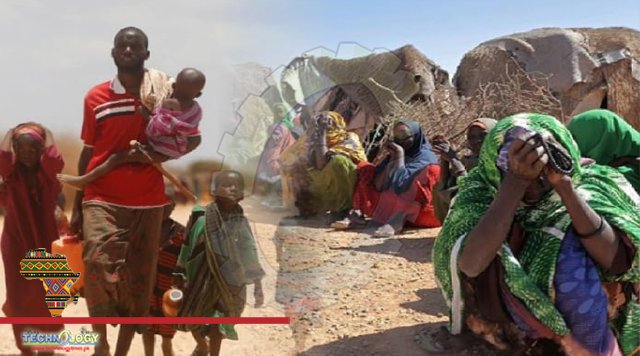On Monday, the UN’s humanitarian chief Martin Griffiths warned that Somalia was on the brink of famine for the second time in just over a decade.

Here is an exploration of a term that evokes the very worst of human suffering. “Famine” is a word freighted with dread of hunger and privation, dating back to the dawn of humanity. More recently, though, it has been codified scientifically to help policymakers and focus humanitarian aid. Since 2004, global agencies are supposed to only use the term according to the Integrated Food Security Phase Classification (IPC) scale. brink of famine, Famine is the fifth and highest phase of the scale, with the IPC defining it as “an extreme deprivation of food”. “Starvation, death, destitution and extremely critical levels of acute malnutrition are or will likely be evident.” According to the IPC scale, famine exists when at least 20 percent of households in a specific area have extremely limited access to basic food; at least 30 percent of children suffer from acute malnutrition; and two people out of every 10,000 die each day “due to outright starvation or to the interaction of malnutrition and disease”. Over the last century, famines hit China, the Soviet Union, Iran and Cambodia, often the result of human actions. Europe suffered several famines in the Middle Ages, but its most recent were during World War I and II, where parts of Germany, Poland and the Netherlands were left starving under military blockades.
In Africa there have been several famines in recent decades, from Biafra in Nigeria in the late 1960s to the 1983-1985 Ethiopian famine, which ushered in a new form of celebrity fundraising and unprecedented media attention on the suffering.The last time famine was declared was in South Sudan in 2017 in Leer and Mayendit counties, areas that have often been a flashpoint for violence. In Somalia,brink of famine in 2011 in southcentral areas of the country killed an estimated 260 000 people, half of them children under the age of six. Griffiths, the head of the UN Office for the Coordination of Humanitarian Affairs (OCHA), said on Monday that famine was likely in two areas of south-central Somalia, Baidoa and Burhakaba, between October and December. Throughout history, famines have generally been caused by human action, usually wars which ravage crops and livestock, ruin trade, displace people and complicate the distribution of aid. Famine “represents a failure on the part of many parties,” said Daniel Maxwell, professor of food security at Tufts University in the United States, told AFP. “Currently in famine-risk areas (Somalia, Ethiopia, South Sudan, Yemen, northeastern Nigeria), violent conflict is the common denominator, but climate factors are playing an increasing role,” Maxwell said. When lack of food has led to an 18 percent loss of weight, the body starts undergoing physiological disturbances, according to a 1997 study of hunger strikes published in the British Medical Journal (BMJ). When people have insufficient food over several weeks, it leads to organ failure and eventually death.
Source: This news is originally published by news24